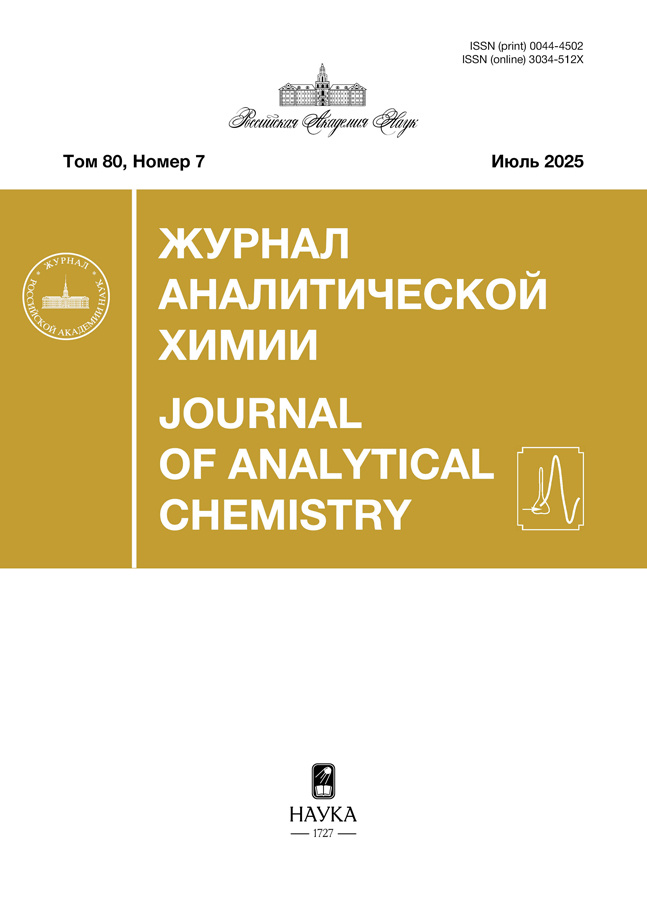Identification of species affiliation and determination of fish eggs adulteration by vibrational spectroscopy and digital colorometry methods
- Авторлар: Amelin V.G.1,2, Emelyanov O.E.2, Khrushchev A.Y.2, Tretyakov A.V.1
-
Мекемелер:
- All-Russian State Centre for Quality and Standardization of Animal Drugs and Feeds
- Alexander Grigorievich and Nikolai Grigorievich Stoletov Vladimir State University
- Шығарылым: Том 80, № 7 (2025)
- Беттер: 656-671
- Бөлім: ORIGINAL ARTICLES
- ##submission.dateSubmitted##: 17.07.2025
- ##submission.dateAccepted##: 17.07.2025
- URL: https://vestnik.nvsu.ru/0044-4502/article/view/687819
- DOI: https://doi.org/10.31857/S0044450225070021
- EDN: https://elibrary.ru/bhlaow
- ID: 687819
Дәйексөз келтіру
Аннотация
The efficiency of combining spectroscopic and chemometric methods for identification and classification of salmon, sturgeon and particle fish caviar, as well as for differentiation of natural and imitated samples, has been shown. Analysis of infrared spectra in the near and middle regions made it possible to identify the peculiarities of chemical composition and structure of the samples under study, providing reliable differentiation of natural and imitated caviar. The use of Raman spectroscopy helped to identify characteristic spectral differences related to protein-lipid composition and the presence of carotenoids, which allowed to clearly differentiate the samples. The application of principal component analysis (PCA), hierarchical cluster analysis (HCA) and formal independent modeling of class analogies (SIMCA) algorithms improved classification accuracy, providing separation of samples by fish species. Digital colorometry based on the analysis of optical characteristics in the UV and IR ranges showed to be an affordable and reliable method that can be an alternative to more expensive spectroscopic approaches.
Негізгі сөздер
Толық мәтін
Авторлар туралы
V. Amelin
All-Russian State Centre for Quality and Standardization of Animal Drugs and Feeds; Alexander Grigorievich and Nikolai Grigorievich Stoletov Vladimir State University
Хат алмасуға жауапты Автор.
Email: amelinvg@mail.ru
Ресей, Moscow; Vladimir
O. Emelyanov
Alexander Grigorievich and Nikolai Grigorievich Stoletov Vladimir State University
Email: amelinvg@mail.ru
Ресей, Vladimir
A. Khrushchev
Alexander Grigorievich and Nikolai Grigorievich Stoletov Vladimir State University
Email: amelinvg@mail.ru
Ресей, Vladimir
A. Tretyakov
All-Russian State Centre for Quality and Standardization of Animal Drugs and Feeds
Email: amelinvg@mail.ru
Ресей, Moscow
Әдебиет тізімі
- ГОСТ 18173-2004. Икра лососевая зернистая баночная. Технические условия. М.: Изд-во стандартов. 2004. 10 с.
- Ситникова Н.В. Идентификация и фальсификация икры в России // Ученые записки Санкт-Петербургского имени В.Б. Бобкова филиала Российской таможенной академии. 2007. № 2(28). С. 84.
- Калюжная Т.В., Орлова Д.А., Родак Г.Н. Идентификация икры лососевых пород рыб с помощью полимеразной цепной реакции с наблюдением в реальном времени // Международный вестник ветеринарии. 2021. № 4. С. 88. https://doi.org/10.52419/issn2072-2419.2021.4.88
- Santiago-Felipe S., Tortajada-Genaro L.A., Puchades R., Maquieira A. Recombinase polymerase and enzyme-linked immunosorbent assay as a DNA amplification-detection strategy for food analysis // Anal. Chim. Acta. 2014. V. 811. P. 81. https://doi.org/10.1016/j.aca.2013.12.017
- Taboada L., Sanchez A., Sotelo C. G. A new real-time PCR method for rapid and specific detection of ling (Molva molva) // Food Chem. 2017. V. 228. P. 469. https://doi.org/ 10.1016/j.foodchem.2017.01.117
- Hu Q., Pan Y., Xia H., Yu K., Yao Y., Guan F. Species identification of caviar based on multiple DNA barcoding // Molecules. 2023. V. 28. Article 5046. https://doi.org/10.3390/molecules28135046
- Birstein V.J., Doukakis P., Sorkin B., Desalle R. Population aggregation analysis of three caviar producing species of sturgeons and implications for the species identification of black caviar // Conserv. Biol. 1998. V. 12. № 4. P. 766. https://doi.org/10.1111/j.1523-1739.1998.97081.x
- Абрамова Л.С., Козин А.В., Гусева Е.С. Проблема фальсификации зернистой икры лососевых рыб и пути решения // Пищевые системы. 2022. Т. 5. № 4. С. 319. https://doi.org/10.21323/2618-9771-2022-5-4-319-326
- Шаока З.А.Ч., Большаков Д.С., Амелин В.Г. Использование смартфона в химическом анализе // Журн. аналит. химии. 2023. Т. 78. № 4. С. 317. (Shogah Z.A.Ch., Bol'shakov D.S., Amelin V.G. Using a smartphone in chemical analysis // J. Anal. Chem. 2023. V. 78. №. 4. P. 317.) https://doi.org/10.31857/S0044450223030131
- Böck F.C., Helfer G.A., da Costa A.B., Dessuy M.B., Ferrao M.F. PhotoMetrix and colorimetric image analysis using smartphones // J. Chemometrics. 2020. V. 34. Article 12. https://doi.org/10.1002/cem.3251
- Helfer G.A., Magnus V.S., Böck F.C., Teichmann A., Ferrãoa M.F., da Costa A.B. PhotoMetrix: An application for univariate calibration and principal components analysis using colorimetry on mobile devices // J. Braz. Chem. Soc. 2017. V. 28. № 2. P. 328. https://doi.org/10.5935/0103-5053.20160182
- Амелин В.Г., Емельянов О.Э., Третьяков А.В., Гергель М.А., Зайцева Е.В. Идентификация и установление фальсификации икры лососевых рыб методами ПЦР, ИК-спектроскопии и цифровой цветометрии // Журн. аналит. химии. 2025. Т. 80. № 5. С. 459.
- Емельянов О.Э., Амелин В.Г., Третьяков А.В. Идентификация куркумы и установление фальсификации методами цифровой цветометрии и ближней ИК-спектроскопии // Журн. аналит. химии. 2025. Т. 80. № 6. С. 533.
- Johnson J.B., Walsh K.B., Naiker M., Ameer K. The use of infrared spectroscopy for the quantification of bioactive compounds in food: A Review // Molecules. 2023. V. 28. № 7. Article 3215. https://doi.org/10.3390/molecules28073215
Қосымша файлдар

























